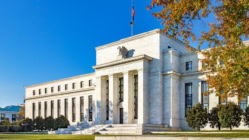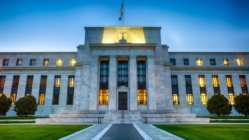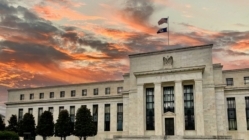PPI Inflation Came In Hot, But Rates Fell?
Producer Price Index (PPI) or “Wholesale” Inflation came in much hotter than expected, but rates fell nonetheless. This surprised many market watchers, as hot inflation reads normally send rates much higher.
Impact Of Conflict In Israel: “Flight To Safety”
One of the reasons rates fell yesterday and did not increase today is because of a “flight to safety.” This is the phenomenon where investors move from stocks to bonds en masse in response to major geopolitical conflicts, as Treasury Bonds are considered “safe” places to park money, pending the outcome of a serious war with severe repercussions to the world economy – particularly if it spreads to surrounding regions and/or countries.
Other reasons rates fell: (1) comments by the Fed officials that today’s tight financial conditions make future rate increases unlikely; and (2) the realization that Friday’s job numbers were not as positive as everyone believed at first glance.
Oil Prices – Impact On Rates
Ironically, the conflict in Israel could also push interest rates UP, if it spreads and threatens oil production – as that would be seen as inflationary. Large oil price movements can significantly influence rates, and yesterday was case in point, as a drop in oil prices was another reason rates fell.
NOTE: My matter-of-fact comments about the impact of the war on markets are not meant to diminish the extremely tragic consequences of the war in any way.
What’s Keeping Rates So High: Fed’s Obsession With Labor Markets
One of the things that is keeping rates so high is the Fed’s obsession with our ostensibly tight labor markets. But in this excellent tweet, hedge fund manager, Bob Elliott, shares a chart that clearly shows unemployment trends after yield curve inversions prior to the last six recessions. The chart’s trend lines not only show that unemployment only spikes AFTER we are in a recession, but it also shows that we are right on time for another spike in unemployment. Elliot commented that “things are about to get interesting.”
84% Of Americans Think Now Is A Bad Time To Buy A House…
I stole this from Leonard Steinberg’s Compass Blog today: “* 84% of Americans polled in Fannie Mae’s National Housing Survey said it was a bad time to buy a home, and most weren’t expecting mortgage rates to come down anytime soon. Often popular sentiment is a great barometer to do the exact opposite? Many people buy stocks when they are high or rising……often mass/popular sentiment can be valuable to contrarians….”
A major factor keeping buyers on the sidelines is not just today’s high rates, but the fear of high rates remaining in place – without the ability to refinance. And that fear is largely fostered by the Fed, and it is why I discuss the extreme likelihood of a recession and falling rates so much. And again, don’t listen to me; listen to some of the data wonks I follow like Stephanie Pomboy, Alf Peccatiello, Joe Brown, Jeff Snider, and Bob Elliott. Readers might also re-read this recent blog: 1% Drop In Rates Brings 5 Million Buyers Back Into the Market.
Sign up to receive our blog daily
























